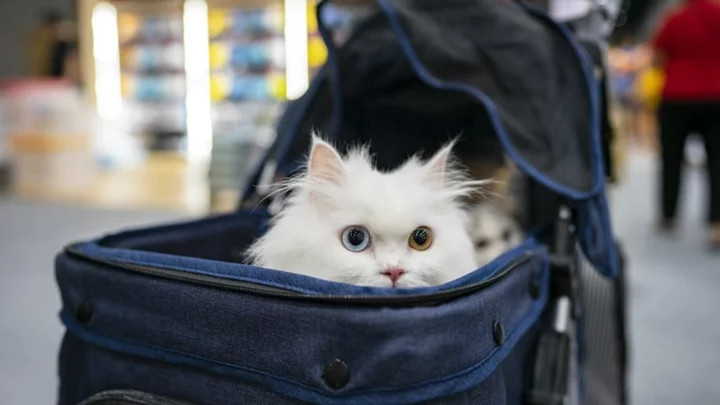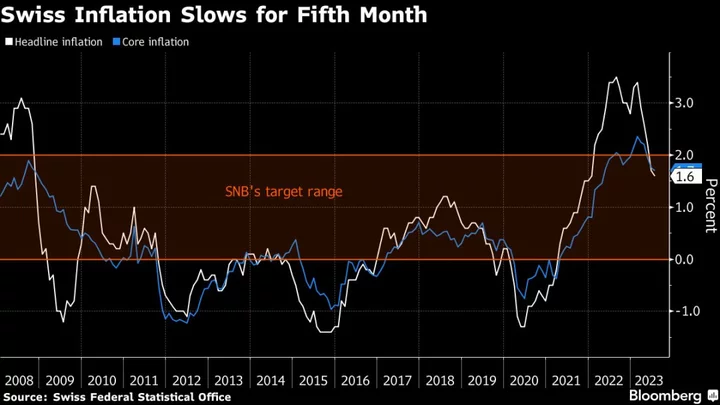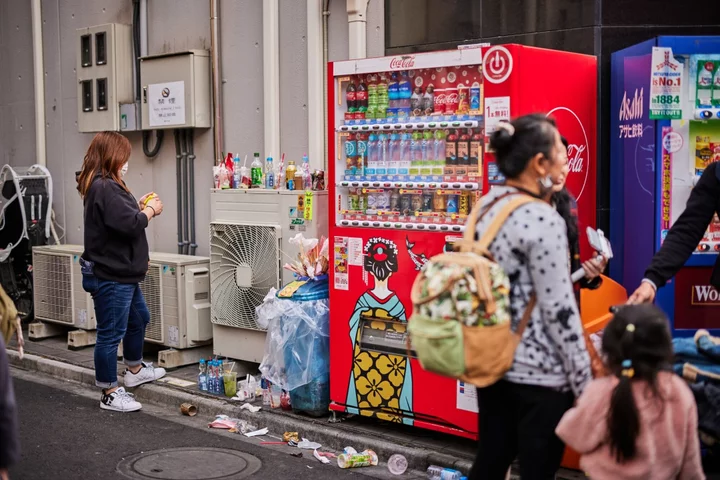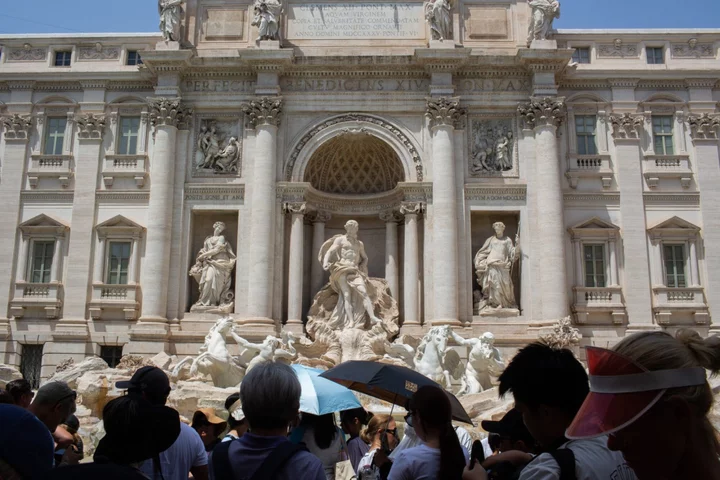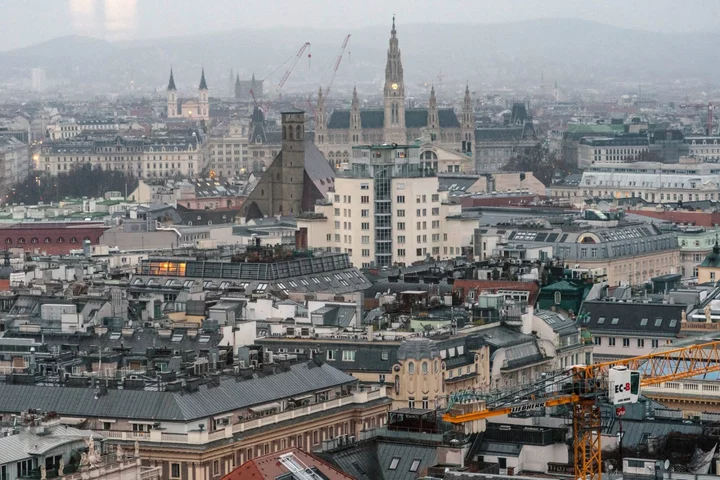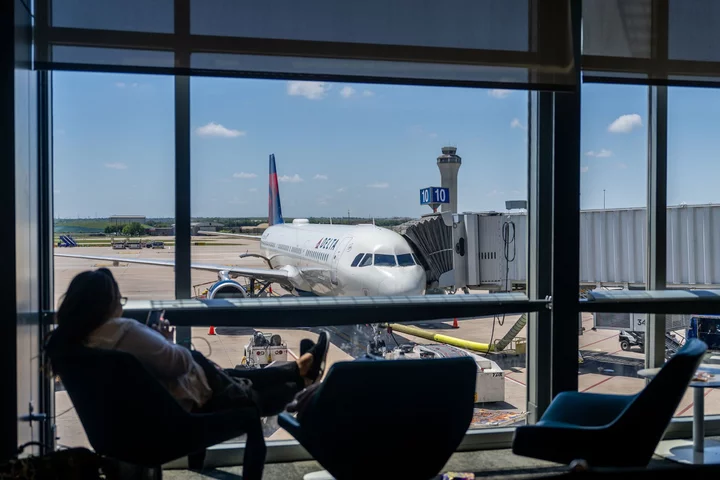Even though Formula One won’t hit Las Vegas until Nov. 16, the hype for Sin City’s first race in more than four decades has reached a fever pitch.
If you hope to attend, the time to plan is now. The third and final round of ticket sales for the Las Vegas Grand Prix begins on June 9. Grandstand seats start at $2,500; hospitality packages in the main grandstand start at $10,000. A standing-room-only three-day general admission pass begins at $500, currently the cheapest ticket offered.
For those in the business of supporting fans beyond the racetrack, turning it up in Vegas was the obvious move after everyone went big at the Miami Grand Prix. Heineken has an $8,000-per-person ticket to see DJs and other entertainers performing all night at a trackside club overlooking a key straightaway. Bellagio is building its Fountain Club right above the track on the Strip; passes cost $11,247 per person.
“With the Mirage sitting at the 50-yard line of the Las Vegas Strip, it just made perfect sense for us to get involved,” Keith Sheldon, president for entertainment at Hard Rock International, which owns The Mirage, said in an email. The Mirage is offering standard grandstand seating for $2,200 per person, with packages that include three-day tickets and lodging starting at $13,000.
Read More: F1 Miami Was a Warmup for Sin City’s Money-Minting Debut
Then there’s Wynn Las Vegas, which has packages that include race access, catering by Wolfgang Puck and performances by J Balvin, Major Lazer and Mark Ronson. Prices start at $14,000 and go up to $150,000. That’s a steal compared with the $1 million ticket Wynn announced last year, which includes lodging, copious amounts of Dom Pérignon and caviar, spa treatments, golf rounds, private race and party access with a dedicated concierge, plus dinner at the Vegas hot spot Delilah, among other things.
Caesars Palace beats that price tag with its $5 million Nobu Sky Villa Emperor offer. It comes with five-night accommodations in the 10,300-square-foot Nobu Sky Villa at Nobu Hotel and a private dinner for 12 created by Michelin-starred chef Nobu Matsuhisa.
Fans Versus Brands
If it all seems prohibitively expensive, that’s because it is. The Las Vegas GP is the costliest event on this year’s 24-race calendar, according to F1 Chief Executive Officer Stefano Domenicali. From hotel rooms and dinner reservations to VIP suites and paddock access, the price of admission has become exclusionary for many motor sports fans, even as businesses lap up the lavish display.
“I don’t know anyone who’s going to Vegas who’s not involved in F1, media or with a brand,” says Lily Herman, who writes the F1 culture newsletter Engine Failure. “These Grand Prix weekends have become more like music festivals in terms of the vibe, the money spent. I don’t know an average Joe American going on a median individual salary to Vegas.”
Meanwhile, Vegas is “an easy sell to stakeholders,” says Vincenzo Landino, who writes a motor sports newsletter called the Qualifier. The Clark County Commission’s landmark decision on Feb. 8 to grant permission for the race to be staged on the Strip until 2032 only strengthens the appeal, he says.
“If I’m consulting a client, I’m gonna say Vegas is where you wanna be because F1 is putting so much investment there,” Landino says. “We know Vegas is gonna be here for a long time, 10-plus years, so we can negotiate a bigger presence [diverse brand activations, long-term partnerships] than just the race. And let’s look at where the heads of these brands want to spend their time. Vegas gives you the lifestyle, the amenities.”
Read More: F1 Could Boost Las Vegas to be Car Capital of America
This delta between the audience that brands want to reach directly and the broader actual F1 fan base has created a dynamic in which high rollers flock to glitzy cities such as Vegas and Miami for weekend-long orgies of opulence. Meanwhile, devotees of the sport who follow weekly standings and geek out over their favorite drivers—but lack access to corporate boondoggles—save their money to attend one race a year in a less expensive market, or don’t go at all. To wit: Netflix Inc.’s gossipy F1 documentary series, Drive to Survive, has pushed the sport’s popularity perhaps more than any other single activator. Still, half of the platform’s subscribers make less than $50,000 annually; an additional 30% make less than $100,000.
“A lot of our community is like, ‘I’m going to the Belgian Grand Prix because it’s way cheaper, and also I can get a vacation out of it,” says Kate Lizotte, one-half of the duo that produces the Two Girls 1 Formula podcast. “If I go to Miami, everything is expensive, it’s hot, I’ve been there before, I don’t care. Why not take advantage and go internationally versus going to this corporate event here in America?”
“With Vegas, we’re just like, ‘OK, this is gonna be a fun thing to watch on TV,’ but if I’m gonna go to a race, I’m gonna go to Austin,” says Nicole Sievers, the other half of the duo. “I love the race in Austin. It’s attainable, it’s a great track for racing, and you know what you’re gonna get.”
A Shift in the Sport
Some insiders say the dichotomy represents a potentially unhealthy imbalance at a critical moment when, after years of mismanaged attempts, F1 has finally developed a foothold in the US. Bolstered by Liberty Media’s savvy ownership, which has improved television coverage, fostered persuasive marketing, supported the Netflix documentary and promised three races on US soil this season, F1 reached an average of more than a million viewers per race in 2022, up 28% from 2021, according to Racer. F1 organizers say they expect to make $500 million from the Vegas race, even as they project spending as much to make it happen this first year.
“There’s this big question of, ‘OK, who exactly is all of this for?’” says Engine Failure’s Herman, noting that the temporary 3.8-mile circuit Vegas is building is considered inferior as a racing surface compared with well-respected tracks such as the Circuit of the Americas, which was built to permanently support a host of motor sports events year-round. Plus, the 10 p.m. local start time of the Vegas race means anyone not on the US West Coast will have to watch in the middle of the night (a scenario, by the way, that long-suffering American fans have had to endure for years).
“There’s a huge concern that F1 is so focused on making money and sort of bleeding the American sports audience dry that they don’t really care about creating great racing moments,” Herman says. Spokespeople for the Las Vegas Grand Prix didn’t respond to a request for comment.
It’s possible that fans who are consistently priced out of F1 races may even turn to other motor sports such as IndyCar or Nascar, or endurance races like the 24 Hours of Le Mans. More than 330,000 people attended the Indy 500 on May 28, the largest audience since the sellout crowd at the 100th running in 2016 and the second-largest in more than 20 years. General entry tickets for the 2024 Indy 500 start around $60.
“People are wanting to go to [other racing series] because it’s a more attainable way to watch motor sports,” Sievers says. “F1 are hanging on a little too much to the idea that people love elite motor sport that is kind of exclusive. They’re not realizing that people are just falling in love with motor sport in general.”
Read More: F1 Want Women in the Cockpit for First Time Since 1976
But others point out that the extreme luxury displayed in Vegas is exactly what US consumers want. “Americans like big, audacious, extravagant,” says the Qualifier’s Landino. “They say, ‘Give us this big Super Bowl-level event.’ That’s what Vegas gives you.”
Vegas provides a third choice for sports fans stateside, many of whom are accustomed to having their sporting events served up like an all-you-can-eat buffet.
“As Americans, we are used to having lots of options,” Landino says. “Do I want to have a weekend away from the family? Gamble, party and come back home, pretend like it never happened? I’ve got Vegas. Do I want to watch a real race as a motor sport fan with a chill vibe? I’m gonna go to Austin. Do I want somewhere by the beach and there are celebrities and it’s hot and sexy? Go to Miami. It’s choose your own adventure—Americans love it.”


